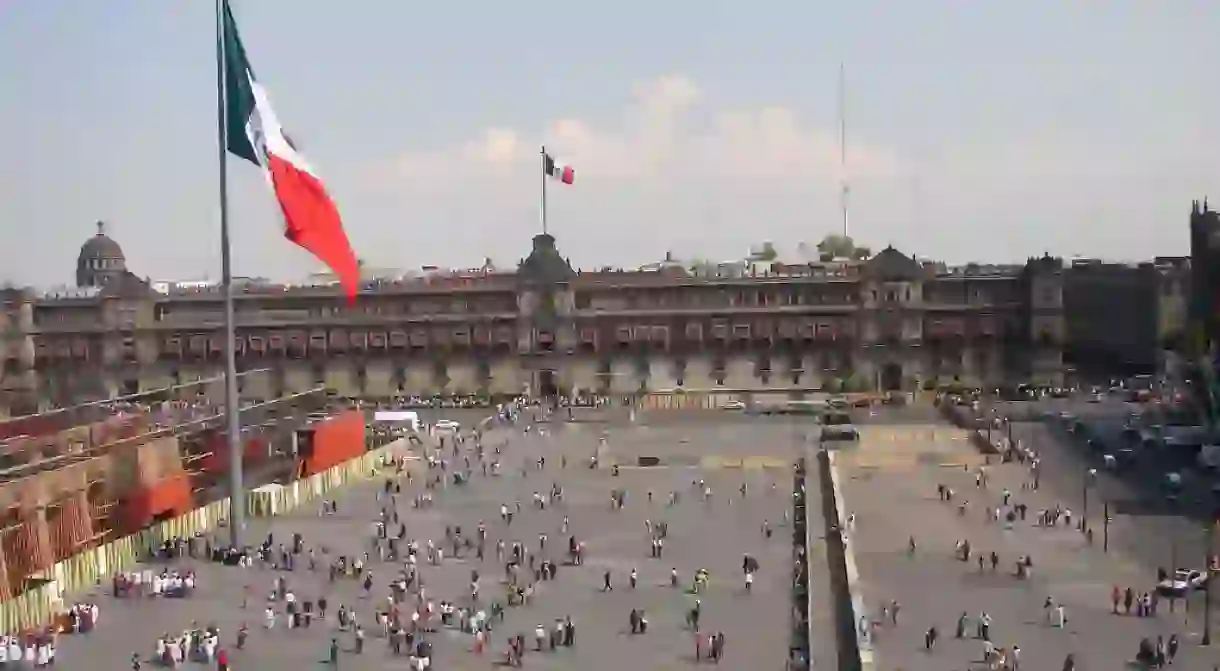Why is Mexico City a Megacity?

A megacity is defined as having 10 million or more inhabitants and usually includes an entire metropolitan area or two closely-located cities that together create a single urban unit. Mexico City has long surpassed the 10 million threshold and is now solidly a megacity at approximately 22 million inhabitants.
According to a 2015 article in the National Geographic, “Speaking only of the Distrito Federal, or the central-most delineation of the city, the population has grown from around 3 million residents to nearly 9 in the last fifty years of the 20th century.”

Mexico is the 11th most populated country in the world, so it makes sense that its capital city, the heart of its commerce and culture, is also dense with inhabitants. Latino countries are well known for the centralization of their populations; many of these countries’ economies and cultural and social centers are housed in a single city, which is quite often the capital (think of Buenos Aires in Argentina or Lima in Peru). This is not to say that smaller cities don’t have a signifigant impact on the social and political culture of Mexico, but their influence is less and their draw not as dynamic.
How did Mexico City get to be so huge?
The main source of Mexico City’s rapid growth in the second half of the 21st century is due to domestic migration. The metropolitan population grew from 3.1 million in 1950 to 5.5 million in 1960 and spiked to 14 million by 1980. Most of this migration was caused by Mexicans from rural areas coming into the city seeking better jobs, education, and a higher standard of living.
In 1940, the capital accounted for only 10% of the country’s industrial firms but almost 33% of its manufacturing output, a rate that rose to 50% by 1960. The city’s workforce expanded as did its industry, but it wasn’t all rosy.

The 80s saw crisis in Latin America. Mexico had large-scale factory closings and layoffs, as well as several terrible disasters like the gas explosions in San Juan Ixhuatepec and the 1985 earthquake. These events and the government’s poor response to them, as well as reduced employment opportunities, caused immigration levels to decline.
By the 1990s, Mexico City had a reputation as dangerous not only in regards to natural disasters but also rampant crime and corruption. This image of the city started to change in the 2000s when a new, more liberal government came to power and several public policies were implemented to improve city life.
What are the issues in this megacity?
Like many megacities across the world, Mexico City suffers from the imbalance of having too many people and not enough resources (or the proper and fair division of those resources among the rich and poor). Many areas of the city experience shortages in water because Mexico is draining its aquifer (an underground layer of water-bearing rock) faster than rainwater and melting snow can replenish it.

Thanks to poor urban planning (and rapid growth that made some forms of planning impossible), Mexico City suffers from extreme sprawling. This means there’s heavy traffic as people move from one side of the city to the other, as the rich travel to and from their gated communities, the poor to and from their barrios.
Pollution and a heavily-used public transportation system put both a monetary and physical strain on the residents of Mexico City. Recent years have seen a rise in pollution at an incredible rate despite efforts to achieve the contrary.
While the city is safer than it once was, like any big city, it continues to have problems with crime and corruption. Fortunately, it is also the vibrant heart of music and art in the country. While the rest of Mexico remains relatively politically conservative, Mexico City takes the lead in having a progressive outlook on abortion rights, gay marriage, and legalizing marijuana.

The city’s propensity to earthquakes (the most recent one occured just last year in September) creates another continual back-and-forth population flow—people move out of the capital to escape risk while other people move in to fill the new vacancies. However, one thing’s for sure: life in the city will never be stagnant and Mexicans and foreigners will always be drawn to Latin America’s largest Spanish-speaking capital as they seek a better life for themselves and their families.













